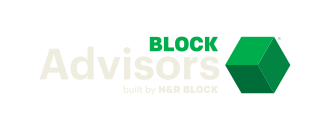When you’re starting a business, knowing your startup costs can make it easier to come up with a business plan and apply for funding. Here are four steps you can take to determine what you need to start a business.
[Read more: 6 Steps to Market Your Business in a Competitive Market]
Understand your business type and associated expenses
The three most common types of businesses are brick-and-mortar, online, and service-based. Here is an overview of the startup costs that come with each type of business:
- Brick-and-mortar:If you have a brick-and-mortar business, you have a physical store where customers can go to buy your products. But maintaining a physical space is more expensive — you’ll have to pay for things like rent, licensing and permits, inventory, and equipment.
- Online: An online business gives you the opportunity to promote and sell your products through a digital space. You won’t have to pay for rent or inventory, but you may have to spend more on marketing, web design, and web hosting.
- Service-based: If you run a service-based business, you market and sell your services to clients rather than products. For instance, you could sell freelancing, consulting, or cleaning services. Service-based businesses can be performed remotely or in-person, and the costs will depend on the service you offer. For instance, freelancing comes with very little overhead while a cleaning company may need to invest in supplies and marketing.
[Read more: The Most Common Business Entities for Startups]
Know your one-time and ongoing expenses
As a business owner, there are two primary types of expenses you’ll encounter — one-time and ongoing expenses. One-time expenses are costs that come up on occasion.
You may have to pay them again at some point in the future, but they aren’t costs you can count on having every month. Here are some examples of one-time costs:
- Fees to register your company with the state.
- Professional licenses.
- Permits.
- Website design.
- Logo and branding.
- Business cards.
- Improvements to your brick-and-mortar location.
Ongoing expenses are things you’ll have to pay for on a monthly basis. This includes things like:
- Rent for your office space.
- Supplies and equipment.
- Software subscriptions.
- Utility bills.
- Insurance.
- Employee salaries.
- Marketing and advertising.
Startup assets differ from business expenses and should be kept separate when filing your tax return. Business expenses like rent, utilities, contract labor, marketing, and other operating costs are tax-deductible and reduce your taxable income.
Identify your startup assets
Startup assets are any valuable inventory that helps you launch your business. This includes things like:
- Cash.
- Equipment.
- Inventory.
- Trademarks.
- Office furniture.
- Other necessary equipment.
Startup assets differ from business expenses and should be kept separate when filing your tax return. Business expenses like rent, utilities, contract labor, marketing, and other operating costs are tax-deductible and reduce your taxable income.
Estimate total costs
Once you have an idea of what you’ll need to start your business, you should calculate your total costs. Create a list of business expenses and assets that your startup will need and break down how much each one will cost.
From there, you can estimate your company’s expected profits and do a break-even analysis to determine how long it should take for your company to become profitable. Be sure to keep inflation and ongoing costs in mind so your budget will be as accurate as possible.
Once you have an idea of your startup costs, you can use this information to help you come up with a business plan. It will also make it easier to seek funding or apply for a loan.
Create a formal report of your expected startup costs, so investors and lenders can understand what you'll use their money for and determine the profitability of your business. Knowing how their money will be used and when they can expect to get it back will make prospective investors more likely to help finance your startup.
[Read more: Small Business Funding: A Breakdown of Business Loan Types]
CO— aims to bring you inspiration from leading respected experts. However, before making any business decision, you should consult a professional who can advise you based on your individual situation.
Follow us on Instagram for more expert tips & business owners’ stories.
CO—is committed to helping you start, run and grow your small business. Learn more about the benefits of small business membership in the U.S. Chamber of Commerce, here.









